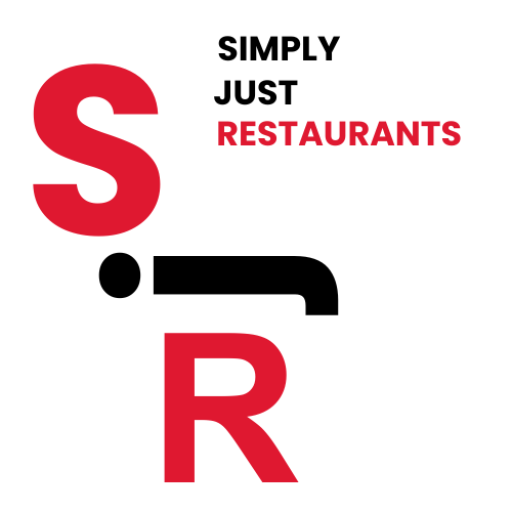- Restaurant operations
- Rule 1: Streamline Inventory Management
- Rule 2: Optimize Menu Engineering
- Rule 3: Leverage Technology for Efficiency
- Rule 4: Prioritize Staff Training and Development
- Rule 5: Foster a Strong Restaurant Culture
- Rule 6: Implement Effective Table Management Strategies
- Rule 7: Prioritize Online Ordering and Delivery
- Rule 8: Embrace Mobile Marketing and Social Media
- Rule 9: Implement Financial Controls and Cost Management Strategies
- Rule 10: Maintain Compliance with Regulations
- Conclusion:
- FAQs
Restaurant operations
In the dynamic landscape of the restaurant industry in 2024, staying ahead requires a strategic approach to operations. The 10 Rules of Effective Restaurant Operations offers a comprehensive blueprint for success in this ever-evolving environment.
At its core, this guide encapsulates the collective wisdom and best practices distilled from the experiences of industry leaders, innovative chefs, and successful restaurateurs.
In an era marked by shifting consumer preferences, technological advancements, and economic fluctuations, adaptability is paramount. The introduction sets the stage by emphasizing the importance of agility and resilience in navigating the challenges and seizing the opportunities that lie ahead. It underscores the need for a forward-thinking mindset that embraces innovation while honoring tradition, balancing creativity with pragmatism.
Moreover, the introduction outlines the overarching principles that underpin the 10 rules, such as prioritizing customer satisfaction, optimizing efficiency, fostering a positive work culture, and leveraging data-driven insights. It highlights the interconnectedness of various facets of restaurant operations—from menu development and inventory management to staff training and customer service—and emphasizes the holistic approach required for sustained success.
Rule 1: Streamline Inventory Management
Effective inventory management is crucial for restaurant profitability. By streamlining inventory processes, restaurants can minimize waste, reduce costs, and ensure consistent supply levels. Utilizing inventory management software and barcode scanning technology enables real-time tracking of stock levels, optimizing purchasing decisions and preventing stockouts or overstocking.
Moreover, implementing just-in-time inventory practices minimizes storage requirements and reduces the risk of perishable items spoiling. By forging strong supplier relationships and negotiating favorable terms, restaurants can secure competitive pricing and maintain high-quality ingredients.
Regular inventory audits and data analysis empower decision-makers to identify inefficiencies, optimize menu offerings, and make data-driven purchasing decisions. By fostering a culture of accountability and transparency among staff, restaurants can improve inventory accuracy and minimize shrinkage, ultimately enhancing operational efficiency and profitability.

Rule 2: Optimize Menu Engineering
Menu engineering is a strategic approach to menu design aimed at maximizing profitability and guest satisfaction. By analyzing sales data, cost of goods sold, and popularity metrics, restaurants can identify high-margin items and optimize menu placement to drive revenue growth.
Strategically positioning profitable items and using visual cues or descriptive language can influence customer purchasing behavior and increase order value. Additionally, regularly updating the menu to reflect seasonal ingredients or trends keeps offerings fresh and aligns with changing consumer preferences.
Moreover, menu engineering involves pricing strategies that balance profitability with perceived value, ensuring competitive pricing while maximizing profit margins. By continuously refining menu offerings and presentation techniques based on data-driven insights, restaurants can enhance the dining experience, increase guest satisfaction, and drive profitability.

Rule 3: Leverage Technology for Efficiency
In the digital age of dining, leveraging technology is indispensable for optimizing efficiency and enhancing the overall guest experience. From front-of-house operations to back-of-house management, integrating innovative tech solutions can streamline processes, minimize errors, and drive operational excellence.
Restaurants can deploy point-of-sale (POS) systems equipped with advanced features such as order customization, table management, and mobile payments to expedite transactions and reduce wait times. Moreover, implementing self-service kiosks and mobile ordering apps empowers guests to customize their orders, facilitating faster service while catering to preferences for contactless interactions.

Additionally, back-of-house operations can benefit from kitchen display systems (KDS) and inventory management software that automate order routing, monitor stock levels, and streamline supply chain logistics. This not only improves order accuracy and reduces waste but also enhances kitchen efficiency and staff productivity.
Furthermore, embracing data analytics tools enables restaurants to gain actionable insights into customer behavior, menu performance, and operational trends. By harnessing data-driven decision-making, restaurateurs can optimize pricing strategies, forecast demand more accurately, and personalize marketing initiatives to drive revenue growth.
Ultimately, by embracing technology as a catalyst for efficiency, restaurants can position themselves for success in an increasingly competitive market while delivering seamless, memorable dining experiences that keep guests coming back for more.

Rule 4: Prioritize Staff Training and Development
In the dynamic landscape of the restaurant industry, investing in staff training and development is essential for maintaining service quality, fostering a positive work culture, and driving long-term success. By providing comprehensive training programs, ongoing skill development opportunities, and constructive feedback, restaurants can empower their staff to excel in their roles and deliver exceptional customer experiences.
Training should encompass various aspects, including food safety protocols, customer service standards, and operational procedures, tailored to each staff member’s role and responsibilities. Moreover, offering opportunities for career advancement, cross-training, and mentorship fosters employee engagement and retention, reducing turnover costs and enhancing organizational resilience.

Rule 5: Foster a Strong Restaurant Culture
A strong restaurant culture serves as the bedrock of success, shaping the behavior, attitudes, and interactions of employees and influencing the overall guest experience. Cultivating a positive work environment built on trust, respect, and collaboration fosters employee satisfaction, boosts morale, and enhances productivity.
Restaurant leaders play a pivotal role in nurturing this culture by exemplifying core values, fostering open communication, and recognizing and celebrating achievements. Encouraging teamwork, empowerment, and inclusivity cultivates a sense of belonging and camaraderie among staff members, fostering loyalty and reducing turnover.
Moreover, a strong restaurant culture extends beyond internal dynamics to resonate with customers, creating a welcoming atmosphere and forging emotional connections that inspire loyalty and advocacy. By prioritizing culture-building initiatives and aligning organizational values with everyday practices, restaurants can differentiate themselves in a competitive market and sustain long-term success.

Rule 6: Implement Effective Table Management Strategies
Effective table management is crucial for optimizing seating capacity, minimizing wait times, and maximizing revenue potential in restaurants. Implementing strategic table management strategies involves balancing guest flow, reservation systems, and walk-in traffic to ensure efficient use of available space.
Restaurants can leverage technology such as reservation management software and table mapping tools to streamline booking processes, accurately forecast demand, and optimize table assignments. By analysing historical data and real-time metrics, establishments can adjust seating configurations and allocate resources accordingly to accommodate varying party sizes and dining preferences.
Moreover, training staff members in effective communication and conflict resolution ensures smooth transitions between seating’s and minimizes guest dissatisfaction. Empowering hosts and servers to manage guest expectations and provide personalized experiences contributes to overall guest satisfaction and loyalty.
Ultimately, by implementing effective table management strategies, restaurants can enhance operational efficiency, improve guest experiences, and drive profitability in a competitive industry landscape.

Rule 7: Prioritize Online Ordering and Delivery
In the digital era, prioritizing online ordering and delivery is paramount for restaurants to meet the evolving preferences and convenience demands of consumers. Establishing a robust online ordering platform enables customers to place orders from the comfort of their homes or on-the-go, expanding the restaurant’s reach and revenue potential.
Restaurants can partner with third-party delivery services or develop in-house delivery capabilities to offer seamless and efficient delivery options. Integrating online ordering systems with POS systems streamlines order processing, reduces errors, and enhances order accuracy.
Moreover, leveraging data analytics from online orders provides valuable insights into customer preferences, ordering trends, and delivery performance, enabling restaurants to tailor offerings and marketing efforts accordingly.
By prioritizing online ordering and delivery, restaurants can adapt to changing consumer behaviors, increase operational efficiency, and capitalize on the growing trend of off-premise dining, positioning themselves for sustained growth and success in a competitive market.

Rule 8: Embrace Mobile Marketing and Social Media
In the digital age, embracing mobile marketing and social media is essential for restaurants to engage with customers, build brand awareness, and drive foot traffic.
Leveraging mobile marketing channels such as SMS campaigns, push notifications, and mobile apps enables restaurants to deliver targeted promotions, loyalty rewards, and personalized offers directly to customers’ smartphones, fostering customer loyalty and increasing repeat business.
Similarly, active engagement on social media platforms such as Instagram, Facebook, and Twitter allows restaurants to showcase menu items, share behind-the-scenes content, and interact with followers in real-time.
Encouraging user-generated content, running social media contests, and responding promptly to customer inquiries and reviews enhance brand visibility and credibility, driving customer engagement and loyalty.
By embracing mobile marketing and social media, restaurants can amplify their online presence, connect with customers on a deeper level, and cultivate a loyal fan base that translates into increased foot traffic and revenue.

Rule 9: Implement Financial Controls and Cost Management Strategies
Implementing robust financial controls and cost management strategies is imperative for the long-term sustainability and profitability of restaurants. By closely monitoring expenses, optimizing resource allocation, and maintaining accurate financial records, establishments can mitigate risks, improve cash flow, and make informed business decisions.
Establishing clear budgetary guidelines and expense tracking protocols enables restaurants to identify areas of overspending or inefficiencies, allowing for timely corrective actions. Moreover, negotiating favorable terms with suppliers, leveraging economies of scale, and implementing cost-saving measures such as energy-efficient equipment or waste reduction initiatives contribute to bottom-line savings.
Furthermore, implementing pricing strategies that reflect the true cost of goods sold and periodically reviewing menu pricing in response to changing market conditions ensures profitability without compromising value perception.
Additionally, investing in staff training to enhance productivity, minimize turnover, and reduce labor costs can yield significant returns in the long run.
By implementing financial controls and cost management strategies, restaurants can optimize profitability, maintain financial health, and navigate economic uncertainties with resilience, positioning themselves for sustained success in a competitive industry landscape.

Rule 10: Maintain Compliance with Regulations
Adhering to regulatory requirements is non-negotiable for restaurants aiming to operate ethically, safeguard public health, and avoid costly penalties or reputational damage.
Maintaining compliance with regulations encompasses various aspects, including food safety standards, labor laws, licensing requirements, and environmental regulations.
Restaurants must stay abreast of evolving regulatory frameworks at the local, state, and federal levels, ensuring full compliance with health codes, sanitation guidelines, and alcohol licensing regulations.
Implementing rigorous food safety protocols, employee training programs, and regular inspections safeguards against potential health risks and legal liabilities.
Moreover, compliance with labor laws, such as minimum wage requirements, overtime regulations, and employee classification guidelines, fosters fair labor practices, reduces turnover, and mitigates the risk of legal disputes or workplace violations.
Additionally, environmental sustainability initiatives, such as waste management practices, energy conservation efforts, and sourcing sustainable ingredients, align with regulatory mandates and contribute to social responsibility objectives.

By prioritizing compliance with regulations, restaurants uphold their commitment to integrity, accountability, and public safety, fostering trust among customers, employees, and regulatory authorities while mitigating operational risks and maintaining a positive brand reputation.
Optimizing restaurant operations for success in 2024 requires a multifaceted approach that embraces innovation, efficiency, and adaptability in response to evolving consumer preferences, technological advancements, and industry trends.
From streamlining inventory management to leveraging technology for enhanced guest experiences, restaurateurs must navigate a dynamic landscape while prioritizing key strategies that drive operational excellence and sustained profitability.
One of the foundational pillars of successful restaurant operations in 2024 is streamlined inventory management. By implementing robust inventory tracking systems and leveraging technology such as inventory management software and barcode scanning tools, restaurants can optimize stock levels, minimize waste, and reduce costs.
This not only ensures the availability of fresh ingredients but also improves operational efficiency and profitability by preventing stock outs or overstocking.
Moreover, menu engineering plays a pivotal role in maximizing profitability and guest satisfaction. Analyzing sales data, profitability metrics, and customer feedback allows restaurants to identify high-margin items, popular dishes, and underperforming offerings. By strategically adjusting menu offerings, pricing strategies, and presentation techniques, restaurateurs can optimize revenue streams, drive order value, and enhance the overall dining experience.
Furthermore, technology serves as a powerful tool for enhancing efficiency and guest engagement in restaurant operations. From point-of-sale (POS) systems equipped with advanced features to online ordering platforms and delivery services, embracing technology enables restaurants to streamline transactions, improve order accuracy, and cater to changing consumer behaviors.
Additionally, data analytics tools provide valuable insights into customer preferences, operational trends, and marketing effectiveness, empowering restaurateurs to make informed decisions and drive business growth.
In parallel, prioritizing staff training and development is essential for maintaining service quality, fostering a positive work culture, and driving long-term success. By providing comprehensive training programs, ongoing skill development opportunities, and constructive feedback, restaurants empower their staff to excel in their roles and deliver exceptional customer experiences.
This not only enhances employee satisfaction and morale but also contributes to reduced turnover and increased operational efficiency.
Moreover, fostering a strong restaurant culture promotes teamwork, empowerment, and inclusivity, ultimately enhancing guest experiences and driving loyalty.
By exemplifying core values, fostering open communication, and recognizing achievements, restaurant leaders cultivate a sense of belonging and camaraderie among staff members, fostering a positive work environment and reducing turnover.
Effective table management strategies are also crucial for optimizing seating capacity, minimizing wait times, and maximizing revenue potential. Leveraging technology such as reservation management software and table mapping tools enables restaurants to accurately forecast demand, streamline booking processes, and optimize table assignments. This ensures efficient use of available space and resources while enhancing the overall guest experience.
Additionally, prioritizing online ordering and delivery services enables restaurants to meet the evolving preferences and convenience demands of consumers.
Establishing robust online ordering platforms and delivery capabilities expands the restaurant’s reach, drives revenue growth, and enhances customer satisfaction.
By leveraging mobile marketing and social media channels, restaurants can further amplify their online presence, engage with customers, and build brand loyalty.
Furthermore, implementing financial controls and cost management strategies ensures the long-term sustainability and profitability of restaurants.
By closely monitoring expenses, optimizing resource allocation, and maintaining accurate financial records, establishments can mitigate risks, improve cash flow, and make informed business decisions.
Lastly, maintaining compliance with regulations is essential for safeguarding public health, fostering trust, and avoiding legal liabilities. By staying abreast of regulatory requirements and implementing rigorous protocols, restaurants uphold their commitment to integrity, accountability, and social responsibility.

Conclusion:
Implementing these ten rules of effective restaurant operations in 2024 ensures a blend of modernity and tradition, enhancing overall efficiency and customer satisfaction.
Embracing technology and sustainability fosters innovation and environmental responsibility. Prioritizing health and safety builds trust and reliability.
Enhancing customer experience through personalization and engagement creates lasting connections. Efficient inventory and staff management optimize resources and service quality.
Maintaining a strong online presence and adapting to trends ensures relevance in a competitive market. Collectively, these strategies form a comprehensive approach to running a successful, contemporary restaurant that meets the evolving expectations of customers and industry standards.
FAQs
Q: What are some of the biggest challenges faced by restaurant operations in 2024?
A: In 2024, restaurants grapple with challenges such as labor shortages, supply chain disruptions, rising food costs, and navigating evolving technology while ensuring compliance with health and safety regulations.
Q: How can technology help improve restaurant efficiency?
A:Technology can enhance restaurant efficiency by automating tasks such as order processing, inventory management, and payment processing, streamlining operations, reducing errors, and improving overall customer experiences.
Q: What are some key metrics used to measure restaurant operations success?
A: Key metrics for measuring restaurant operations success include revenue per square foot, table turnover rate, labor cost percentage, customer satisfaction scores, and gross profit margin, reflecting financial performance and service quality.
Q: How can restaurants build a strong employer brand to attract and retain staff?
A: Restaurants can build a strong employer brand by offering competitive wages, opportunities for career advancement, a positive work environment, comprehensive training programs, employee recognition, and benefits packages.
About Author sudeshna mukherjee
You May Also Like…
The Ultimate Guide to Hiring a Consultant Chef
Introduction Food trucks or mobile food trucks is an idea that has arrived. But, there is a issues with food safety in...
The Ultimate Guide to Hiring a Consultant Chef
Introduction Food trucks or mobile food trucks is an idea that has arrived. But, there is a issues with food safety in...



